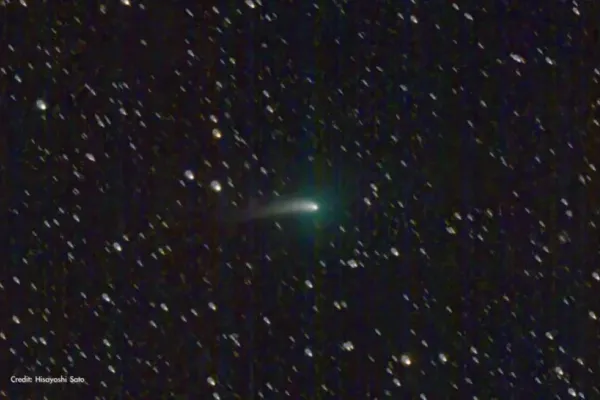Ohio SkyLites - February 2023

What’s Up? Constellations, Planets, and Astronomical Events Visible in February 2023
-Written and Compiled by Alyssa Whalen
While winter brings cold winds and slippery sidewalks, it also brings long nights to go out and observe! However, the long nights are growing shorter with each passing day. On average, approximately 2 minutes and 26 seconds of daylight is added every day this month. The sun rises around 7:30 am, and sets around 6:10 pm every evening, though it varies slightly every day.
February’s full moon occurs the night of February 5th. This full moon has two names given by Native American Tribes. The first, and most common name is the Snow moon, named for the heavy snowfall experienced during this time of year. However, the winter months also made hunting difficult, which is how it also got the nickname the Hunger moon. February’s new moon occurs later in the month on February 20th. In the lucky event that the sky is clear this winter, the best time to observe is always during a new moon, since the moon’s bright shine can make fainter objects impossible to view.
February is not a great month to view planets this year, unless Mars is your favorite. Mars continues to have perfect visibility with its iconic red glow in the sky. It will be observable from sundown until 3:00 am every night. Venus and Jupiter are also visible, though not as clearly as Mars. Venus is far enough away from the sun to be observable just after sunset in the early evenings. Jupiter is moving closer to the sun from our perspective. This month, it rises during the day, and sets a few hours after sundown at 9:30. It will continue to rise closer to sunrise and set closer to sunset until there is a period of time when it is completely obscured by the sun. This is the reason Saturn is currently not visible; it is being obscured by the sun. Neptune and Mercury are too close to the sun to observe. Uranus is only partially illuminated by the sun and very far away. This combination makes the planet very difficult to observe with the naked eye.
With some luck and clear skies it is still possible to catch the once-in-a-lifetime comet C/2022 E3 (ZTF) this month. As days pass, it will travel from the northern area of the sky near Polaris, across the zenith and fade near the southwestern area. The comet will be brightest on February 1st and 2nd in the constellation Camelopardalis, but the nearly full moon will make naked-eye observing impossible without a perfectly dark and clear sky. In the best conditions, the comet will reach magnitude 5.0, which is equivalent to the brightness of the faintest stars that are visible with the unaided eye. Despite the obstacles to naked eye observers, the comet will be visible with a telescope until March, but with a rapidly decreasing brightness. An article on EarthSky recommends waiting until February 10th if this is your first time trying to locate a comet. It will be close to Mars and the constellation Taurus at that time (western sky at sunset), and it can be captured in a 30-second long exposure. This is a wonderful opportunity for amateur astronomers, space enthusiasts, and students of all kinds to explore Earth’s night sky.
February 2nd, 6:00 am
Auriga is a lesser-known constellation that is directly overhead between sundown and midnight. Auriga is Latin for Charioteer, and it is located on top of Taurus. In fact, the two constellations share the star Elnath, which is known as both Beta Tauri and Gamma Aurigae. While looking for Taurus is the easiest way to find Auriga, it can also be identified by the bright star Capella, located to the west of the constellation Gemini.
Northwest of Auriga is the constellation Perseus, named for the mythological Greek hero. Perseus is most well known to be the home of the Alpha Persei Star Cluster. This cluster is found through the star Mirfak, the brightest star in Perseus; however, the star cluster contains many stars within the constellation.
North of Perseus is Camelopardalis. Its name translates to “spotted camel,” so despite expectations, the constellation actually depicts a giraffe. The stars outlining the constellation are extremely faint to view with the naked eye, and can only be seen in dark skies.
Sources:
- https://www.timeanddate.com/sun/@5165418?month=2&year=2023
- http://www.seasky.org/astronomy/astronomy-calendar-2023.html
- https://www.timeanddate.com/astronomy/night/@5165418
- https://www.theplanetstoday.com/
- https://astronomy.com/news/videos/2023/01/comet-c2022-e3-ztf-this-week-in-astronomy-with-dave-eicher#:~:text=The%20comet%20may%20reach%20naked,late%20January%20into%20early%20February.&text=Comet%20C%2F2022%20E3%20(ZTF)%2C%20seen%20here%2C,visible%20with%20the%20naked%20eye.
- https://earthsky.org/astronomy-essentials/new-comet-might-get-bright-enough-for-binoculars/
- https://stellarium-web.org/
Images:
- Snow Moon: https://www.space.com/35627-february-full-moon.html Image credit: Ozkan Bilgin/Anadolu Agency/Getty
- Solar System Orbits: https://www.theplanetstoday.com/
- Comet Location: https://stellarium-web.org/
- Comet C/2022 E3 (ZTF): https://earthsky.org/astronomy-essentials/new-comet-might-get-bright-enough-for-binoculars/ Image by Luke Oxlade
- Constellations: https://stellarium-web.org/
